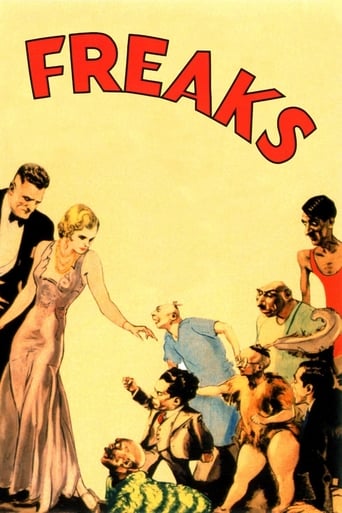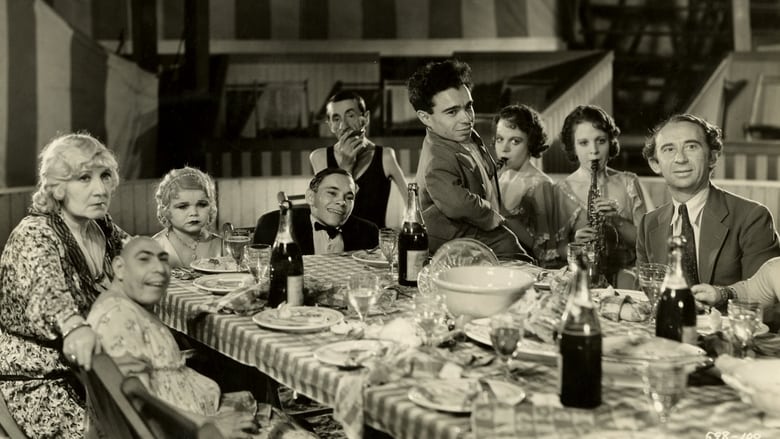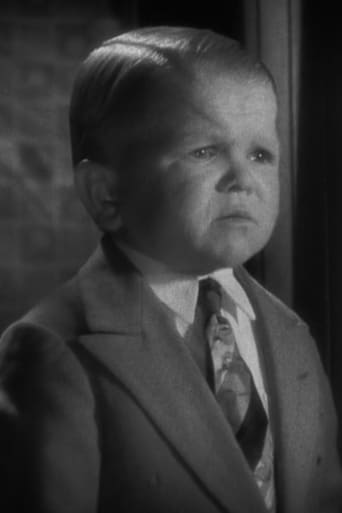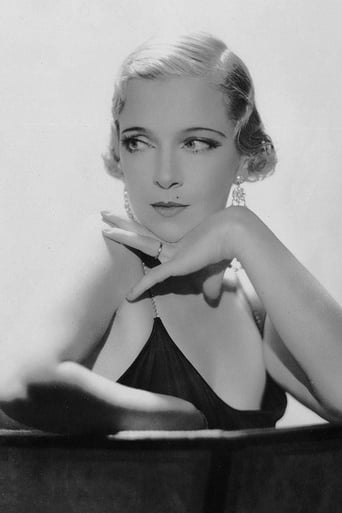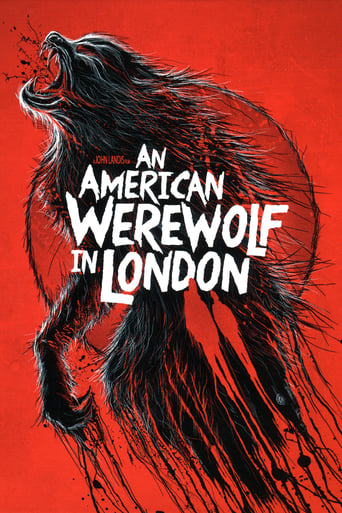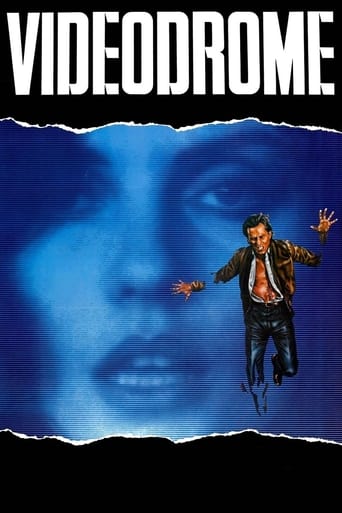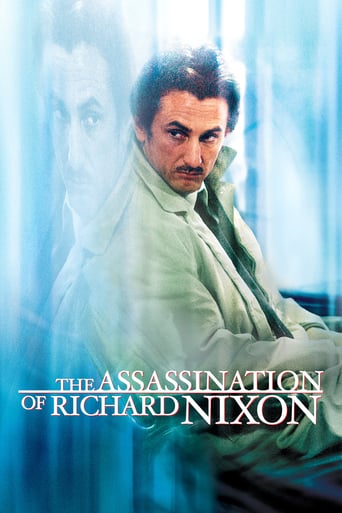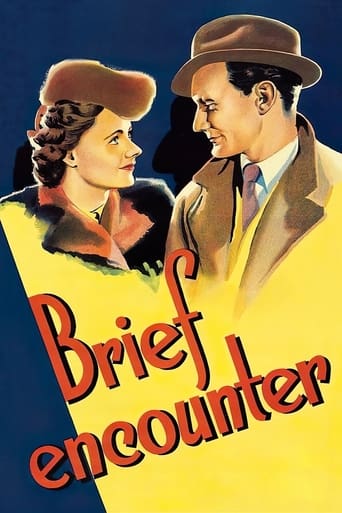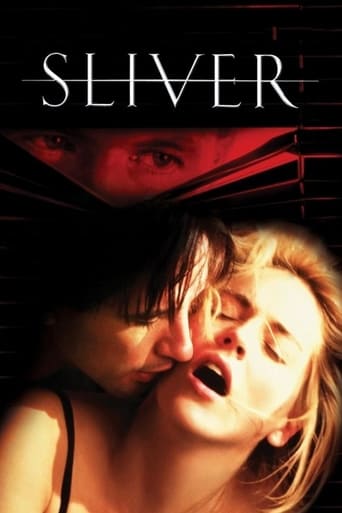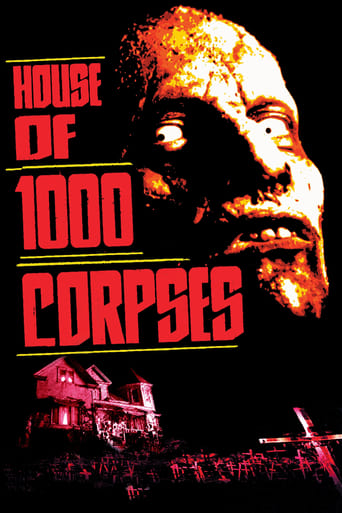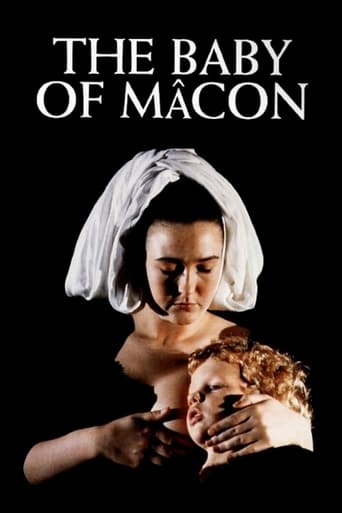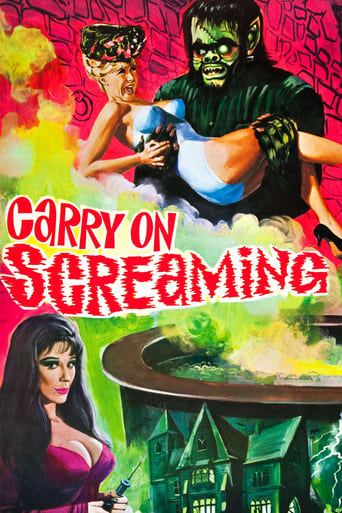Freaks (1932)
A circus' beautiful trapeze artist agrees to marry the leader of side-show performers, but his deformed friends discover she is only marrying him for his inheritance.
Watch Trailer
Free Trial Channels
Cast


Similar titles
Reviews
Slow pace in the most part of the movie.
Good start, but then it gets ruined
A different way of telling a story
Clever and entertaining enough to recommend even to members of the 1%
A classic of pre-Code cinema, Tod Browning's 'Freaks' is populated with a broad cast of real-life carnival performers and those with deformities, and the effect is striking. We see the armless, legless, and completely limbless. We see conjoined twins, a 'human skeleton', and microcephalics (so-called 'pinheads'). We see a 'bird girl' and a 'stork woman' (who we find out later had Virchow-Seckel syndrome). And we see some of the more conventional carnival acts: a bearded lady, a half-man/half-woman, a fire-eater, and a sword-swallower. We never see them performing in front of an audience; instead all of the action in the film is behind the scenes, and the effect is humanizing. We see life from their perspective, and that they face the same relationship issues that the rest of society face. We watch the film perhaps voyeuristically because of the deformities and differences, but it's to Browning's credit that they are shown sympathetically. A caretaker for a group which includes the three microcephalics chides a couple of guys who react in horror, pointing out they're just children who are playing in the sun. A little person (Harry Earles) points out that most 'big people' laugh at him, because "they don't realize that I'm a man with the same feelings they have." It's telling that the real 'freaks' in the story are two "normal people", a trapeze artist (Olga Baclanova) and her strong-man boyfriend (Henry Victor), who play on Earles' emotions, and then plot to kill him for his money. There are several truly memorable scenes, starting with Prince Randian, "The Human Torso", an armless and legless performer in a tight one-piece garment making him appear like a caterpillar, manipulating a cigarette and a matchbox with ease, and fluidly giving himself a light. Another is when the performers are all drinking at a wedding and chanting "One of us, one of us, Gooble gobble, Gooble gobble, We accept her, we accept her, One of us, one of us" riotously, until Baclanova erupts in disgust and calls them all freaks. The look of hurt in their eyes, and shame in Earles' face is heart-rending. However, nothing can top the circus performers crawling through the mud, with revenge in their eyes. The extended sequence that this led to was so disturbing that the film's 90 minute run-time had to get cut down to just 64, and it's a real shame that the original is lost. Great film, from a great director.
Greedy and conniving circus trapeze artist Cleopatra (a nicely cold and calculating portrayal by the stunning Olga Baclanova) decides to marry proud midget Hans (the excellent Harry Earles). However, after the other freaks in the circus discover that Cleopatra only married Hans for his inheritance as well as is having an affair with cruel strongman Hercules (a perfectly hateful performance by Henry Victor), they decide to exact a harsh revenge.The key triumph of Tod Browning's controversial masterpiece is how Browning sees the humanity and fierce loyalty in a group of unique individuals who are commonly perceived as monstrous and grotesque. Indeed, Browning treats the titular malformed characters with great respect and compassion. Moreover, Browning offers a flavorsome evocation of the circus milieu, wisely avoids crude sensationalism in favor of absorbing melodrama (although the conclusion does qualify as truly nightmare inducing horror fodder), and even further spices things up with a wickedly funny sense of perverse humor. The thoughtful script by Willis Goldbeck and Leon Gordon makes a powerful and provocative central point on how physical beauty can't compensate for a gross lack of decency and morality. The fine acting rates as another major asset: Leila Hyams makes an appealing impression as the sweet Venus, Wallace Ford brings lots of charm and energy to his colorful role as jolly smartaleck clown Phroso, Roscoe Ates contributes an amusing turn as the stuttering Roscoe, and Daisy Earles does fine and touching work as Hans's concerned girlfriend Frieda. The brutal climax packs a startling punch, with the ultimate fate of Cleopatra in particular proving to be extremely ironic and disturbing. Kudos are also in order for Merritt B. Gerstad's crisp black and white cinematography. Worthy of its classic status.
Although, it was chosen for inclusion in the National Film Registry in 1994 and is considered by many to be a classic by many; 1931's Freaks still can makes some people feel uncomfortable, watching it. After all, a horror film about killer sideshow performers will indeed, raise some eyebrows even in today's extreme world. Some people still feel, that it is a horrific exploitation film. It can be certainly be argued that, since the film does somewhat invites audiences to gawk at, and eventually fear, the so-called "freaks" of the title. However, others audience members see it, as a mostly sympathetic portrayal. After all, the one-dimensional villains, strong-man Hercules (Henry Victor) & Cleopatra (Olga Baclanova) was indeed conspiring to murder one of the freaks, in order to steal his large inheritance. In my opinion, the sideshows revenge plot was somewhat justified, because of that. Although, I agree with the sympathetic people; I still have to say, there are somethings about the film that still can be criticize. Not everything in this film was perfect. One is the notorious bad-acting from both the real-life sideshow performers, and the actors chosen to play the villains. The dialogue was really hard to heard, due to the thin German & Russian accents, some of the actors, had. Other times, the dialogue was some badly written, that it just doesn't sound natural, coming out of a performer's mouth. Although, director Todd Browning and his uncredited screenwriters offer frequent reminders of the sideshow performers' humanity, there were tons of parts in the film, where, the sideshow performers were looked down, upon, as children, rather than real-life adults. Other times, the camera somewhat linger, for a little too long. While, the 'slice of life' sequences, were somewhat entertaining, and does help expose, who these supporting characters, are. Plus, I understand, that director Tod Browning had previously worked as a contortionist in a traveling circus, but what does showing a long sequence in which a performer use her feet to do everyday activities, in an almost ballerina style grace, have to do with the main plot? Nothing. It really doesn't help, force the main story, along, at all. It felt like padding. Despite that, I still would had love to see the original now-lost 90 minute version, rather than the 64 minutes movie, we got, instead. Much of the violent sequences of the freaks attacking the villains was removed. Not only that, but a number of comedy sequences and most of the film's original epilogue was also cut from the film, due to executive meddling. Instead, a new prologue featuring a carnival barker was added, as well, as the new epilogue featuring the reconciliation of the tiny lovers, despite the fact, that the happy ending, doesn't work; as it come across as jarring and out of place. After all, how does a circus performer at that time, honestly, makes that much money? I never heard of millionaire midgets, before. Plus, it's disturbing to think, that they got back together, seeing how both of the actors, playing Hans (Harry Earles) & Frieda (Daisy Earles) were indeed brother and sister in real-life. Despite that, I do like, the fact, that they did cast real people with deformities as the eponymous sideshow "freaks", rather than using costumes and makeup on conventional actors. However, it's a bit disheartening to hear, that the sideshow actors, were banned from the MGM commissary due to complaints from other actors. Not only that, but were getting underpaid, compare to the normal actors for the same amount of time. Despite that, I like how 'Freaks' does seeks to unseat its audience's expectations and challenge their biases in a way. At the time, that was pretty daring for any major Hollywood released to a movie like this. Even today, some studios wouldn't even dare, go the lengths that this film does. For that, I have to give MGM, some props for that. It's just sad that this movie bomb at the box office for being too offensive. It even supposedly, cause an audience member to have a miscarriage. It got even worst, as the film was then sold off to exploitative, second-rate distributors in 1947 who truncated it, toured it and renamed with altered names like 'Nature's Mistakes', 'Forbidden Love' & 'The Monster Show'. Only to have it, then banned in the UK & parts of the US for the next thirty years after those releases. It's also sad, that this film, pretty much, ruin Tod Browning's film career. Yes, he did directed a few more films through 1939; however, he never had the success, as he had, before, making 'Freaks'. Was it, worth it for Browning? Yes, indeed, in my opinion. One gets an even stronger sense of Browning's likely motivations and intentions with this movie, when one read the source material, in which, this film was based on. Author Tod Robbins' strange and brutal short story "Spurs.", presents all of the characters, more monstrous and selfish than Browning's version. Another thing, while Robbins' story goes for broad comedy and more making fun of the disability, Browning's more sensitive adaptation finds something pointed and tragic instead. It's shows that Browning honestly care about, making this film, and it shows Overall: Browning's film powerfully grapples with the cruelty that people are capable of inflicting, when they fail to recognize someone else's humanity. That, rather than sensational exploitation, is why this movie continues to endure. It's a good movie to watch, but not a perfect film like some modern viewers think it is. Still, it's worth watching.
Tod Browning's choice to use real sideshow attractions affords viewers a unique film experience. Despite most of the actors being untrained, the film didn't seem much more campy than others from this time period. The final scene, with the "freaks" crawling through the mud in the rain, is haunting and it took me a long time to get the visual out of my head. While on the surface this looks like an exploitation of the people deemed "freaks", Browning uses this film to begin a social and political conversation on the treatment of people with disabilities. Unfortunately, a portion of the film had to be cut in order to appease the public. As a result of these cuts, the film seems to be abrupt and jumps around quite a bit.

